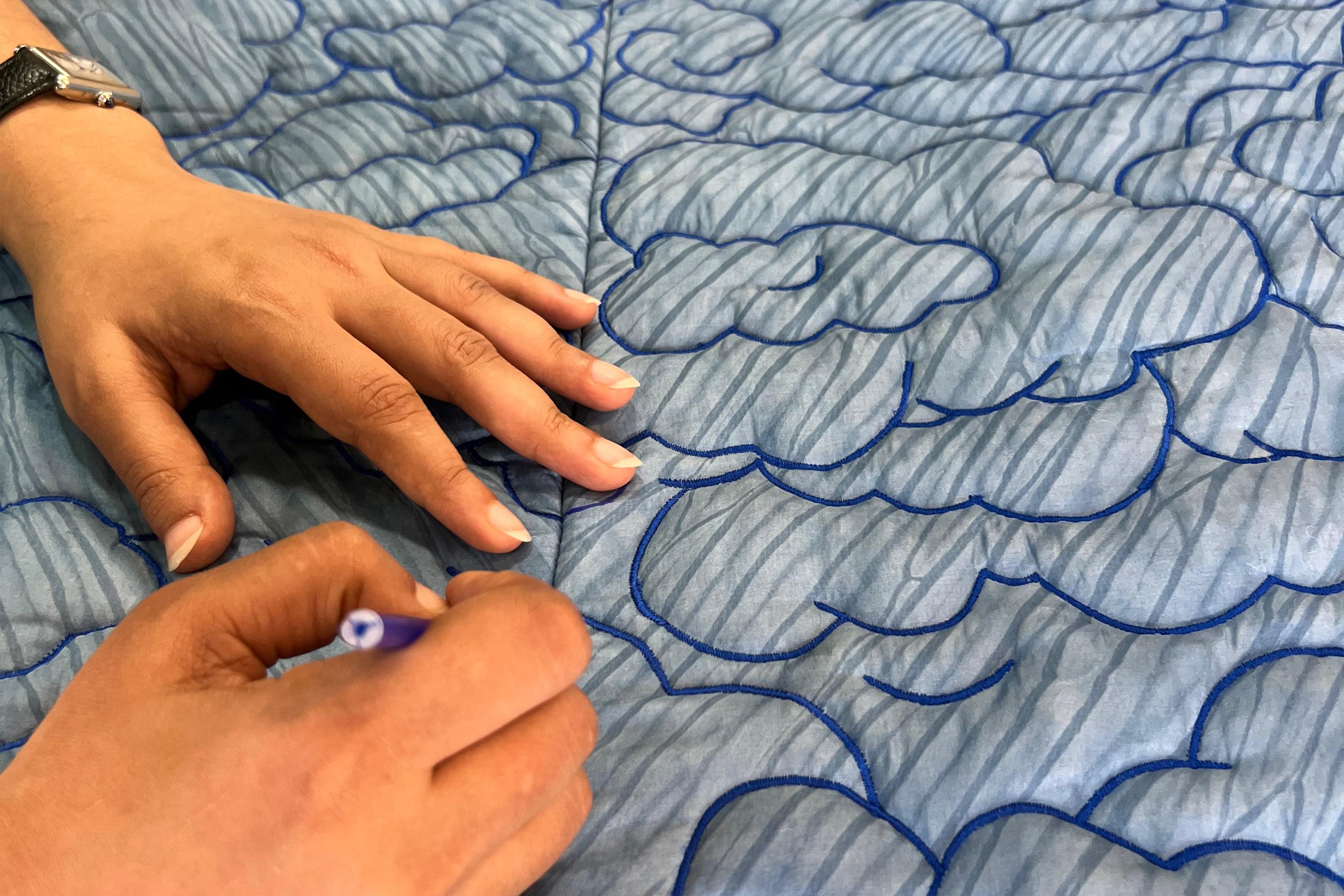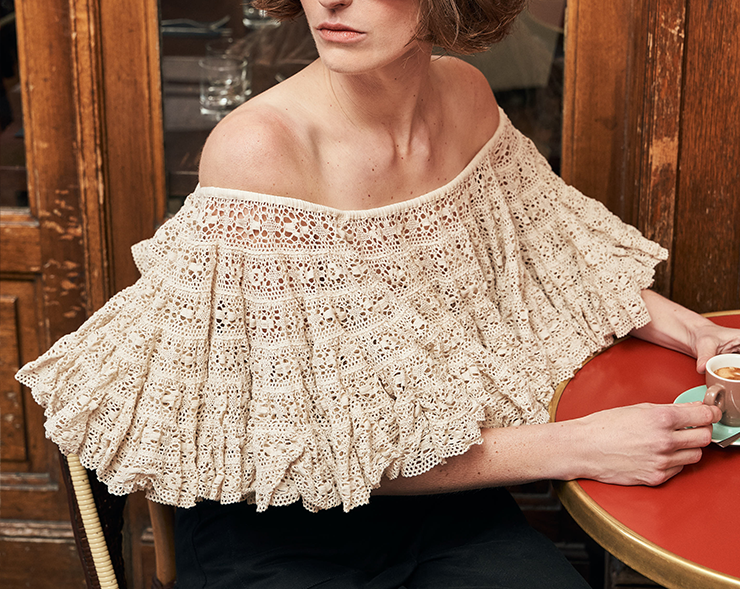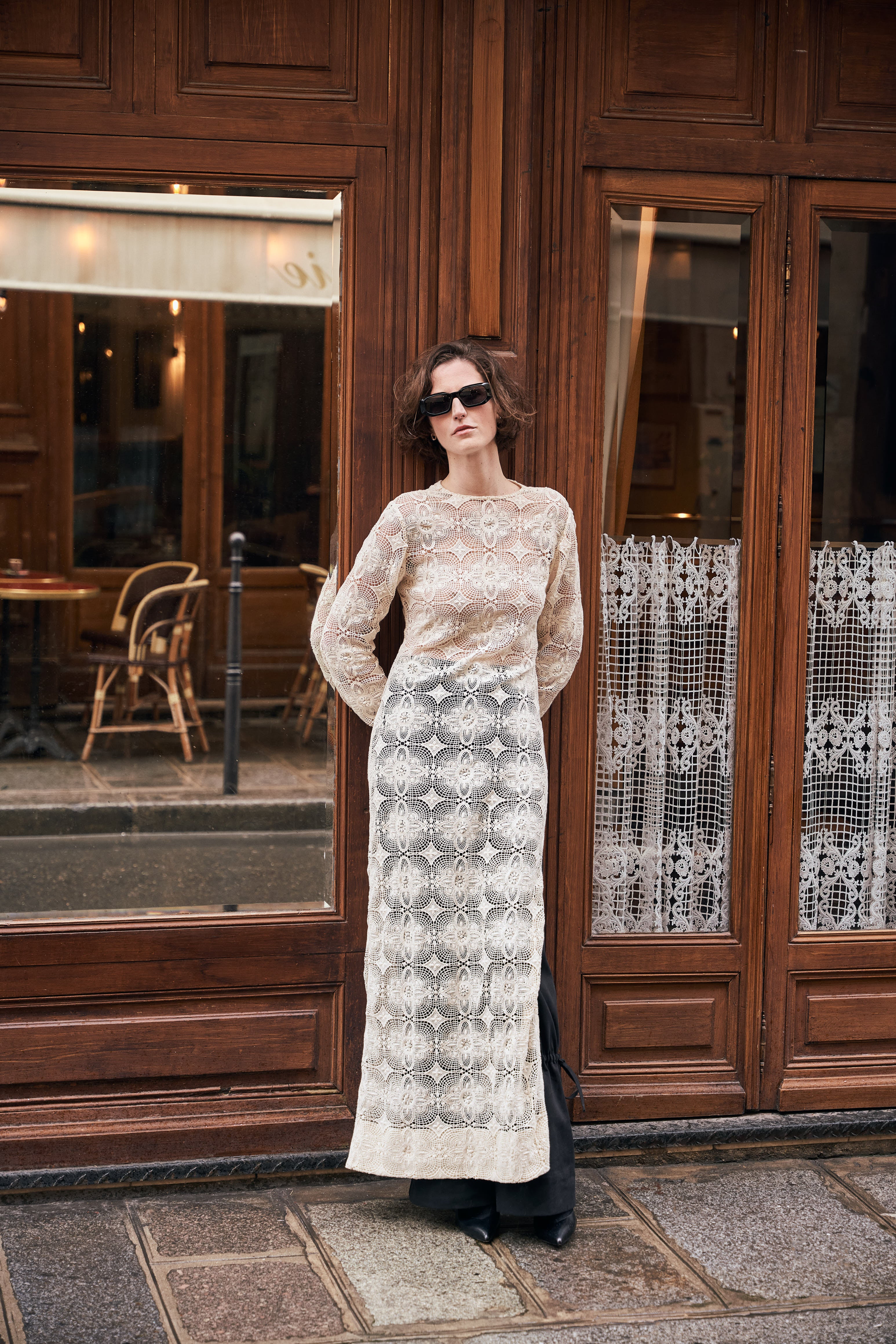
Alexander McQueen, © Musée du Louvre - Nicolas Bousser
It is usually much easier to find an Egyptian sarcophagus, Roman sculptures or old masters paintings in the Louvre than fashion models - unless you include Mona Lisa, of course ! The great museum, until now not known as the red hot center of fashion, might soon change preconceptions.

Rick Owens © Musée du Louvre - Nicolas Bousser
With its spectacular exhibition Louvre Couture, Objets d’Art, Objets de Mode, the Louvre is showing how enormously influential the world’s biggest museum has been to fashion designers, from Hubert de Givenchy to John Galliano, Jean-Paul Gaultier or Karl Lagerfeld, from Cristobal Balenciaga to Iris van Herpen. The exhibition is showing the continuous dialogue between the Louvre’s collections and designers. Over 45 Maisons de couture - brands - have loaned pieces from their archives for this show which features 71 looks and over 30 accessories. As the museum says about its treasures: “The museum is a vast moodboard.”

Christian Dior ©Musée du Louvre - Nicolas Bousser
Case in point, Chanel’s Spring Summer 2019 Haute Couture collection. Karl Lagerfeld, a lover of the French 18th Century, noticed in the museum’s enormous collections a 1743 chest of drawers made for the Countess de Mailly’s chateau de Choisy. The designer took from the elegant furniture the patterns of flowers and animals, reproduced them on white sequins, while the silver bronze of the commode became embroideries.
Hubert de Givenchy, Autumn/Winter 1990-1991 Haute Couture collection. The couturier was a great collector of modern art. He bought Rothko paintings, Miro, Giacometti, but he also had a great collection of decorative art and objects, mostly from the 17th and 18th Century. For the Autumn/Winter 1990-1991 collection he took inspiration from the André-Charles Boulle “armoire” - closet - from around 1700. It had been owned by José Maria Sert, an artist, and Misia Sert, a great patron of the arts and friend of Coco Chanel. Directly inspired by the furniture, Givenchy designed a black evening pantsuit in silk damask with Lesage embroideries. It is a direct connection to the copper and scale marquetry.
It is also decorative arts from the Renaissance who inspire the work of Dior’s Maria Grazia Chiuri, Gothic architecture which triggers Iris van Herpen’s imagination, the “bustes reliquaires” for Daniel Roseberry at Schiaparelli’s, armors for Demna at Balenciaga’s, Medieval tapestries for Marine Serre and Dries van Noten, Bernard Palissy’s 16th Century ceramics for Alexander McQueen. Versace, Jonathan Anderson, Dolce&Gabbana or Vivienne Westwood were also admirers of the great collections of the museum.

Gucci ©Musée du Louvre - Nicolas Bousser
Louvre Couture offers a journey starting with Byzantium and the Middle Ages, a world of ivory and precious stones and gold. Then we move to the Renaissance period with sumptuous ceramics, massive tapestries with rich colors, finely crafted armors. The exhibition then moves to the Grand Siècle rooms (18th Century), and to finally the exuberant 19th Century in Emperor Napoléon III’s opulent apartments. “Our ambition is to show, like painting and photography, film and literature, sculpture and dance, how much art objects from the Middle Ages, the Renaissance and modern times are fully alive sources of inspiration for creators from another essential territory of artistic expression: fashion,” says Olivier Gabet, the curator of this dazzling exhibition opening the eyes of the visitors to the constant dialogue between arts and fashion through centuries and space.
~Jean-Sébastien Stehli  Chloé ©Musée du Louvre - Nicolas Bousser
Chloé ©Musée du Louvre - Nicolas Bousser
Louvre Couture, Objets d’Art, Objets de Mode. Until July 21. louvre.fr
 Alexander McQueen & Bottega Veneta ©Musée du Louvre - Nicolas Bousser
Alexander McQueen & Bottega Veneta ©Musée du Louvre - Nicolas Bousser





